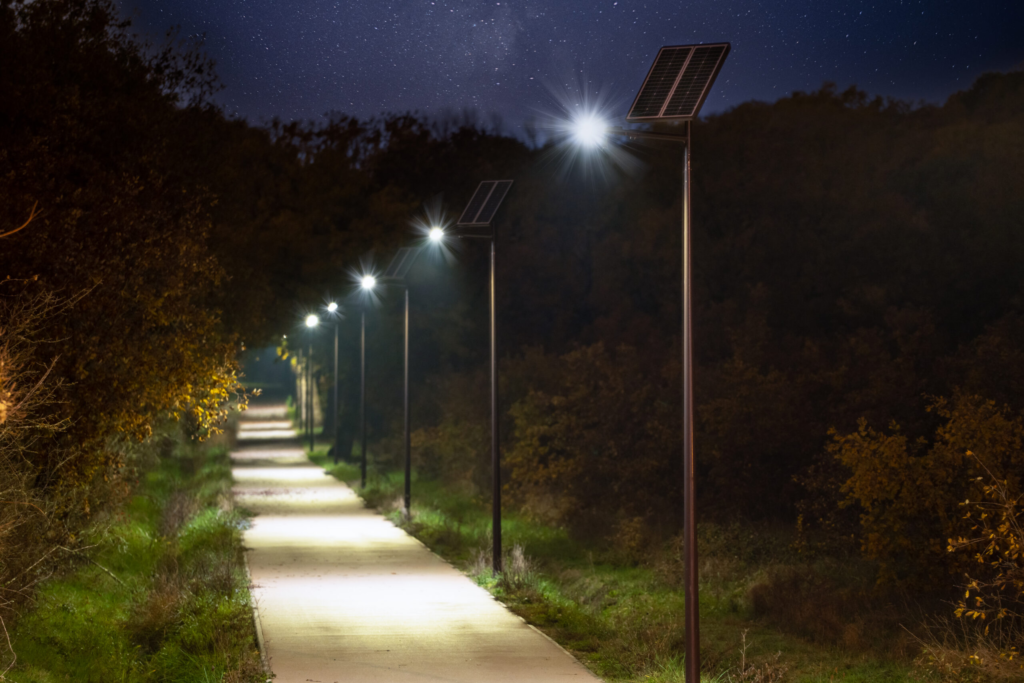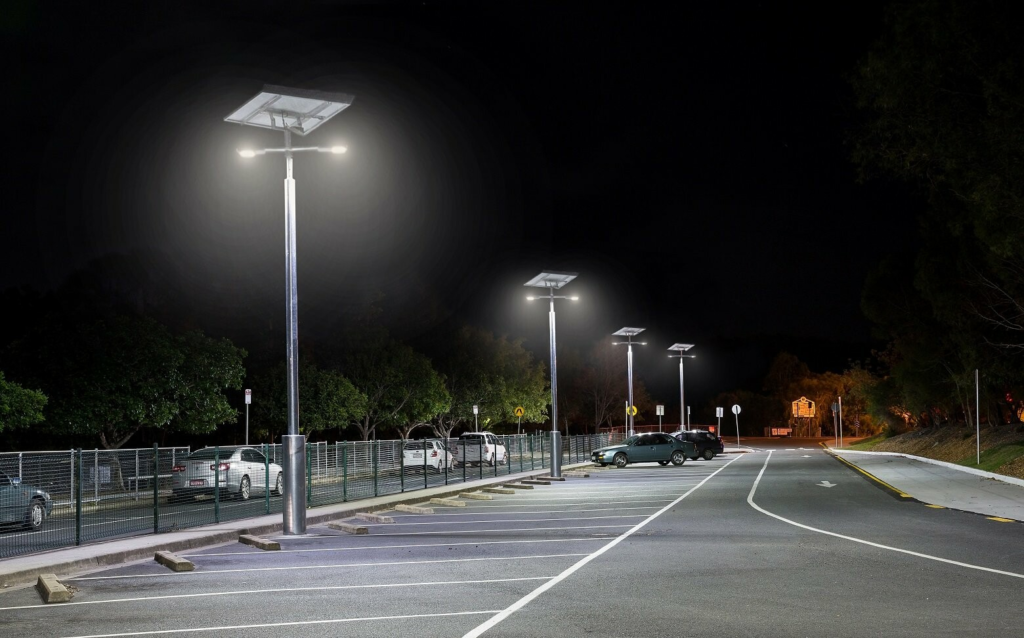As cities and communities around the world embrace sustainability, solar street lights have become a prominent solution for outdoor lighting. With their energy efficiency, reduced carbon footprint, and lower operational costs, they are steadily replacing traditional lighting systems. However, one common concern persists among potential users: Can solar street lights work effectively in rainy weather?
The answer is both reassuring and nuanced. This article explores the functionality of solar street lights in rainy weather, explaining their working mechanism, the role of modern technology in enhancing their efficiency, and factors to consider for optimal performance during cloudy or wet conditions.
NOTE:- Innovative solar street light UAE systems were deployed by multiple municipalities, reducing carbon emissions and maintenance costs. High-performance and weather-resistant lights were selected. Choose Prolux International LLC to power your projects with reliable solar technology tailored for the UAE environment. Get in touch now.
Understanding How Solar Street Lights Work
To understand their performance in rainy weather, it’s essential to grasp how solar street lights operate. These lights function through a combination of key components:
- Solar Panels: Capture sunlight and convert it into electrical energy.
- Rechargeable Battery: Stores the electrical energy collected during the day.
- Controller: Manages energy flow between the panel, battery, and light.
- LED Light Source: Uses stored energy to provide illumination at night.
- Sensors: Often included to detect motion and ambient light levels.
During the day, solar panels absorb sunlight and store energy in the battery. At night or during low-light conditions, this stored energy powers the LED lamp.
Solar Panel Efficiency During Rainy Weather
Rainy or overcast conditions reduce the amount of direct sunlight that reaches the solar panels. However, this does not render the panels ineffective. Modern photovoltaic (PV) panels are designed to function even under diffused light conditions. While efficiency drops compared to bright sunny days, panels still generate electricity in cloudy weather.
In fact, high-quality monocrystalline panels, commonly used in solar street lights, perform better in low-light conditions than polycrystalline ones. Innovations in solar panel technology have also led to the development of materials that enhance energy capture during cloudy days.
Battery Backup and Energy Storage
One of the most critical factors in ensuring performance during rainy days is the battery backup system. Most well-designed solar street lights come with batteries that provide at least 2 to 5 days of autonomy, meaning they can continue functioning without sunlight for that period.
This battery autonomy is crucial in regions that experience frequent or prolonged rainy seasons. Lithium-ion and LiFePO4 batteries are popular choices due to their high energy density, long lifespan, and ability to perform well in variable weather conditions.
Smart Controllers and Energy Management
Advanced solar street lighting systems include smart controllers that intelligently manage power distribution. These controllers adjust lighting intensity based on battery levels and expected sunlight availability.
For example, if the system predicts several days of overcast weather, it may dim the lights slightly during the night to conserve energy. Some smart controllers also integrate weather forecasting algorithms, helping to optimize performance and energy usage more efficiently.

Waterproofing and Durability
Another important concern during rainy weather is the durability and waterproofing of the solar street light system. High-quality systems are built with IP65 to IP68 ratings, ensuring they are dust-tight and protected against strong jets of water or even temporary submersion.
In addition, components like the LED housing, wiring, and connectors are sealed and insulated to prevent moisture ingress, corrosion, and electrical failure.
Performance in Extended Rainy Seasons
In areas with long monsoon or winter seasons, it’s important to choose solar street lights with:
- Larger Solar Panels: To maximize energy capture even on cloudy days.
- Higher Battery Capacity: To ensure extended autonomy.
- Adaptive Lighting Modes: Such as motion-sensing or dimming features to conserve energy.
Some systems also include hybrid features that allow them to switch to grid power if solar energy is insufficient, though this compromises the off-grid advantage.
Case Studies and Real-World Applications
Countries like the Philippines, India, and parts of Europe have successfully implemented solar street lighting systems in regions with heavy rainfall. For instance:
- Kerala, India: Despite a long monsoon season, solar street lights have proven effective, thanks to high battery capacities and smart energy management.
- Amsterdam, Netherlands: Uses solar-hybrid street lights in areas with limited sunlight, ensuring uninterrupted operation.
- Manila, Philippines: Solar lighting has improved safety and reduced energy costs, even during typhoon season, through durable designs and efficient storage systems.
These examples demonstrate that with proper design and technology, solar street lights can perform reliably in less-than-ideal weather conditions.
Maintenance During Rainy Seasons
While solar street lights are largely maintenance-free, rainy weather can cause:
- Accumulation of dirt or water on panels: Reducing efficiency. Periodic cleaning is advised.
- Moisture in battery enclosures: Which may require occasional inspection and resealing.
- Check for corrosion: On mounting structures and connections to prevent long-term damage.
Scheduled maintenance can help in keeping the lights running optimally, especially in coastal or high-humidity regions.
Environmental and Cost Benefits
Even during rainy periods, solar street lights continue to offer significant advantages:
- Reduced Carbon Footprint: No reliance on fossil fuels.
- Lower Operational Costs: No electricity bills and minimal maintenance.
- Independence from Grid Failures: Especially valuable in remote or disaster-prone areas.
- Long-Term Savings: Despite a higher initial investment, ROI is strong over time.
Choosing the Right Solar Street Light for Rainy Climates
If you’re considering solar street lights for a location with frequent rainfall, look for features like:
- High-efficiency monocrystalline solar panels
- Weather-resistant and IP-rated enclosures
- Lithium-based batteries with deep cycle capabilities
- Adaptive lighting controls and smart energy management
Consulting with experienced solar solution providers can help customize systems for specific regional conditions.

Conclusion
So, can solar street lights work in rainy weather? Yes, they can — and quite effectively — when equipped with the right components and technologies. With advancements in PV panels, energy storage, and smart controllers, solar lighting systems are more resilient than ever before. By investing in high-quality designs and understanding the specific weather challenges of a location, solar street lighting remains a reliable, sustainable, and cost-effective solution — rain or shine.
For more insightful articles related to this topic, feel free to visit – bdnews55